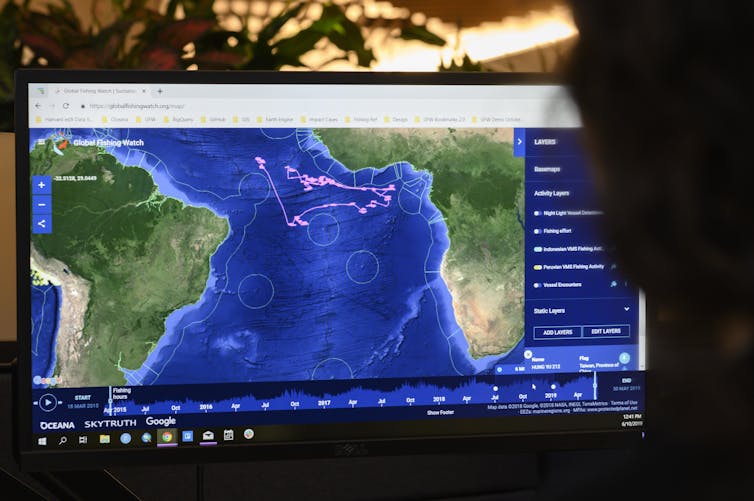USA.- Fish catches by Thailand’s distant-water fleet fishing throughout the Indo-Pacific are almost seven times higher than what the country reports to the Food and Agriculture Organization of the United Nations, a new study by the Sea Around Us reveals.
In 2014 alone, the Asian country caught 3.7 million tonnes of fish outside its Exclusive Economic Zone but reported only 247,000 tonnes. This figure, although substantial, represents a decline from peak numbers reached in the mid-1990s when the more relaxed rules of Thailand’s neighbours allowed for massive catches of over 7 million tonnes per year. Back then, as much as 80 per cent of the catch was unreported and much of it likely obtained illegally, the study reveals.
“Fishing by Thai vessels outside of Thailand’s waters takes place around the South China Sea, the Indonesian archipelago, the Bay of Bengal as well as the Western Indian Ocean, under both official and unofficial agreements, as well as illegally,” says Brittany Derrick, lead author of the study and a researcher with the Sea Around Us initiative at the University of British Columbia’s Institute for the Oceans and Fisheries.
The fact that Thai authorities still cannot account for an important amount of what Thai vessels are catching beyond its borders puts the entire industry in jeopardy. “Unsustainable and illegal practices, as well as slavery and human trafficking, are still widespread. Knowing this, the European Union gave Thailand a ‘yellow-card status,’ which means that either the country strengthens its laws and improves monitoring, control, and surveillance systems, as well as the traceability of landings based on reliable data, or it might face a trade ban on its exports into the EU market,” Derrick explains.
Being the fourth largest seafood exporter in the world, Thailand has taken measures to improve its fishing operations, such as temporarily banning transshipments within and outside of its Exclusive Economic Zone, and requiring all vessels to return to port within 30 days at sea. It has also implemented an electronic fishing licensing system, a logbook reporting system and a Vessel Monitoring System.
However, “some reports suggest that significant levels of unmonitored and illegal activity continue. In other words, vessels are traveling further distances to fish rather than complying with the new laws,” says Dirk Zeller, co-author of the study and Professor of Marine Conservation at the University of Western Australia. “Enforcing Thai laws in the waters and ports of a distant country is difficult or even impossible, despite Thailand’s official obligations under international law as the flag-state of these vessels,” he adds.
This kind of maneuver has also created a situation in which domestic catches are not properly reported. “Reconstructed domestic catches taken within Thai waters over the last 60 years were estimated to be nearly one and a half times larger than catches reported by Thailand to the FAO. For 2014, for example, Thai fishers caught 1.7 million tonnes of fish in the Thai EEZs, of which 27 per cent was not reported,” Zeller, who also leads the Sea Around Us – Indian Ocean, says.
Stay Always Informed
Join our communities to instantly receive the most important news, reports, and analysis from the aquaculture industry.
In total, Thailand’s domestic industrial, artisanal, subsistence and recreational sectors caught over 109 million tonnes of fish between 1950 and 2014 and failed to report much of that. “This lack of reliable data hinders the country’s efforts to address the overexploitation of its marine resources, which have been showing a downward trend since the mid-1990s. It also makes it more difficult to develop policy and enforce stricter regulations,” Derrick adds.
The study “Thailand’s missing marine fisheries catch (1950-2014)” was published today in Frontiers in Marine Science. It is based on the Sea Around Us’ catch reconstruction method, which incorporates best estimates of unreported catches, and complements both national statistics and fishery data assembled and reported by the Food and Agriculture Organization of the United Nations on behalf of Thailand.
Reference (open):
Brittany Derrick, Pavarot Noranarttragoon, Dirk Zeller, Lydia C. L. Teh and Daniel Pauly. Thailand’s Missing Marine Fisheries Catch (1950–2014). Front. Mar. Sci., 12 December 2017 | https://doi.org/10.3389/fmars.2017.00402
https://www.frontiersin.org/articles/10.3389/fmars.2017.00402/full
Source: Sea Around Us
Editor at the digital magazine AquaHoy. He holds a degree in Aquaculture Biology from the National University of Santa (UNS) and a Master’s degree in Science and Innovation Management from the Polytechnic University of Valencia, with postgraduate diplomas in Business Innovation and Innovation Management. He possesses extensive experience in the aquaculture and fisheries sector, having led the Fisheries Innovation Unit of the National Program for Innovation in Fisheries and Aquaculture (PNIPA). He has served as a senior consultant in technology watch, an innovation project formulator and advisor, and a lecturer at UNS. He is a member of the Peruvian College of Biologists and was recognized by the World Aquaculture Society (WAS) in 2016 for his contribution to aquaculture.



